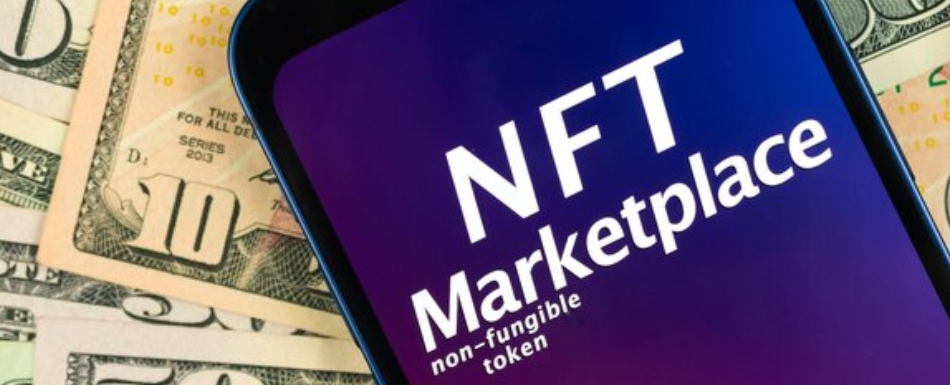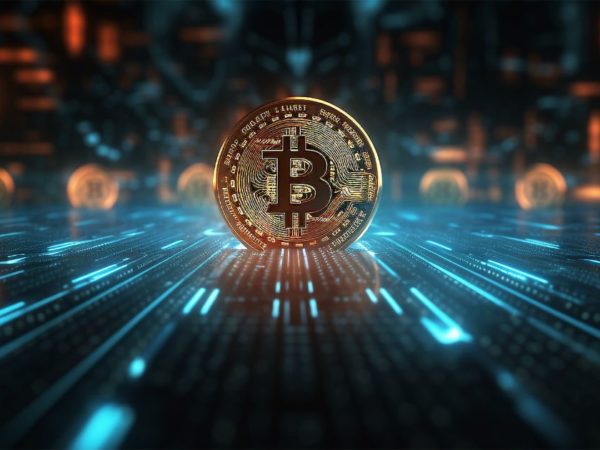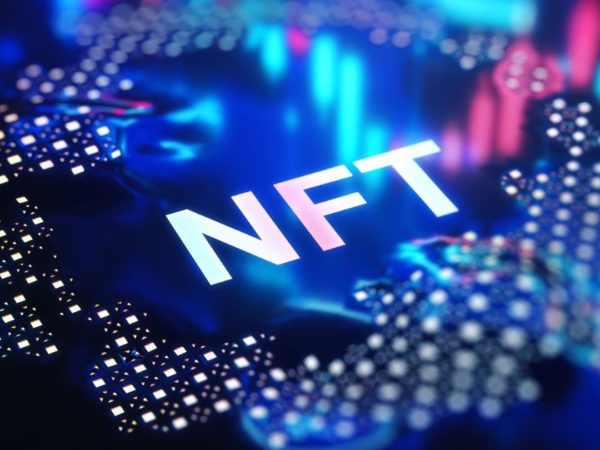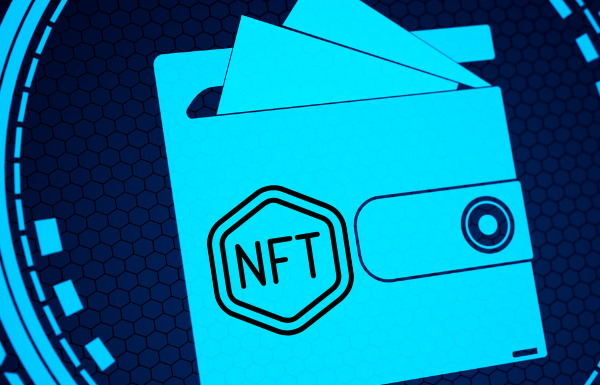NFTs are quickly becoming a game-changer in the world of digital content. By leveraging the power of blockchain technology, NFT marketplaces allow for the verification of the provenance of digital content, offering a new way for creators and collectors to truly own and trade scarce digital items.
In this article, we look at NFT marketplaces and how we can create an NFT marketplace from scratch.
A Prelude to NFT Marketplace
Blockchain technology has grown exponentially over the years and has opened up new possibilities in both economic and business aspects. Initially, blockchain technology gained recognition due to the advent of cryptocurrencies.
Blockchain technology has become particularly prevalent in the economy and finance sectors. Financial institutions are looking to blockchain technology to transform their traditional banking operations. Adopting practices like DeFi in industries like banking and finance is relatively simple and does not require radical transformations.
Banks can benefit from blockchain technology by enabling quicker transactions at lower costs reducing excessive bureaucracy. Blockchain’s applications have extended beyond cryptocurrencies to many sectors, including healthcare, e-commerce, publishing, finance, and insurance.
The development of the Metaverse, the emergence of green initiatives, and the growing popularity of NFTs confirm blockchain technology’s relevance.
What is an NFT Marketplace
Compared to physical content, digital content can be infinitely copied and shared, making it difficult to establish proper ownership. However, by creating unique digital assets authenticated through blockchain-based transaction logs, NFT platforms have found a way to create scarcity and enable meaningful ownership of digital items.
When considering NFT marketplaces, it is essential to understand they can be characterized on a spectrum from streamlined to augmented. Streamlined marketplaces, such as OpenSea and Rarible, are more like traditional platforms and offer sellers a broad range of NFTs and limited services.
They primarily focus on facilitating efficient transactions and providing payments through credit cards and/or crypto payments. These platforms have extensive and varied user bases due to their breadth.
Augmented marketplaces, on the other hand, are highly specialized to offer numerous value-added services, including minting, marketing, curation, pricing recommendations, portfolio trackers, and even full-blown games built on top of the NFTs.
For example, SuperRare focuses on visual art, and Sorare focuses on digital sports cards. These specialty services can add much value but come at a higher cost.
Augmented platforms generally have higher transaction fees and upfront setup costs due to the resources required to build, integrate, and support customized tools and experiences. When deciding which marketplace to partner with, you must consider the type of NFTs you offer and which platform best suits your needs.
Streamlined platforms may be a better fit for those who want to minimize costs and have the resources to design, mint, and market their NFTs independently. Augmented platforms are ideal for those who want a more specialized, full-service experience but are willing to pay higher transaction fees and upfront costs.
By understanding the landscape of available platforms and their unique offerings, you can make an informed decision that will help you unlock new markets and revenue streams with NFTs.
Components and Architecture of an NFT marketplace
The key attributes of an NFT marketplace software architecture include maintainability, scalability, reliability, security, simplicity, performance, interoperability, extensibility, rate of delivery, and testability.
Maintainability refers to the extent to which the architecture can be modified, fixed, or improved. Scalability refers to the software’s ability to handle the sudden surge in computational loads without affecting performance.
Reliability means minimal downtime and upholding data integrity with reduced runtime errors. Security means checking for software vulnerabilities or breaches. Simplicity means a user-friendly UI for easy adoption.
Performance determines how the software responds to specific actions over time, measured through latency and channel capacity.
Interoperability ensures seamless data exchange with external systems, while the extensibility of the architecture enables the software to handle additional components and functionalities. The rate of delivery is the ability to revise and ship software to customers regularly.
The testability feature ensures the software is tested multiple times before deployment, reducing the likelihood of errors.
Developers can create a scalable, reliable, secure, and extensible NFT marketplace architecture diagram by considering these attributes.
#1. Define the Niche
A crucial step towards constructing an NFT marketplace is to select the optimal business niche. This process involves thorough planning to create a niche for the NFT marketplace looking into both the frontend and backend development side of the software.
All aspects of the marketplace need to be planned during this phase laying the groundwork for subsequent development decisions to align with the business requirements.
#2. Choose the Blockchain Architecture
Selecting the right blockchain is crucial when creating an NFT marketplace software. Ethereum blockchain is widely used for developing an NFT marketplace. However, to future-proof the platform, consider supporting multiple blockchains.
Ethereum is the most commonly used blockchain network for NFTs, but emerging players such as Polygon, Solana, Cardano, and BNB Chain are rapidly gaining popularity.
#3. Closed or Open NFT Marketplace
Open marketplaces allow anyone to sign-up and sell their NFTs. There is no vetting process involved, and it often needs premium features. On the other hand, closed or premium marketplaces are restricted to premium subscribers or those with an invitation link.
A closed NFT marketplace helps create a space for valuable NFTs. While open marketplaces are easy to use, they can be vulnerable to imposters and fraudulent sellers.
Closed marketplaces, however, offer greater control and exclusivity. It is worth noting that closed marketplaces use a proprietary token, whereas open NFT marketplace supports a wide range of tokens. Specifically, users of a closed marketplace must use the platform’s native token for all transactions.
#4. Design UI/UX
For an NFT marketplace to succeed, one of the most important factors is the design of its UI/UX features. Whereas traditional e-commerce marketplaces like Shopify or eBay require customers to understand intermediary knowledge of the service they opt for, NFT marketplace software allows for transactions without such knowledge.
Without a well-executed UI/UX design, an NFT marketplace will be limited in functionality to simply just trading digital collectibles. The design needs to be user-friendly and easy to access when purchasing NFTs without knowing the underlying blockchain technology.
Achieving this requires careful research, implementation of best practices, and expert knowledge of UI/UX design principles.
#5. Create Smart Contracts
Smart contracts are built to create NFTs on-chain and to ensure they behave in a specific way. If designed effectively, smart contracts help make the NFT marketplace successful, providing a standardized set of rules for NFT interactions.
Developing smart contracts requires identifying all possible scenarios that enable or reject a smart contract. Before writing the code, it is essential to run test cases to check the requirements in the early stages of development. This saves time for coding.
#6. Setting Up a Payment Gateway
To successfully operate the NFT marketplace created, you must create payment gateways. The marketplace needs to offer the mandatory feature of connecting crypto wallets. Connecting with customers through social media and emails can also be used to enable seamless transactions.
You may need additional integrations based on your specific business requirements. The key is carefully considering the necessary integrations and ensuring they are effectively implemented. The most commonly used methods are integrating third-party services like offering credit card payments that enable fiat transactions and crypto payments.
#7. Decide Upon Commission Fee
As the NFT marketplace prospers, you must figure out how much to charge customers. It is important to decide upon a competitive and fair revenue model and payment collection method.
Offer value additions plus an avenue for transacting with quality NFTs enabling reliable security is a good way to charge commission while retaining the customer base. Keep in mind to align your revenue model with your business goals and in meeting the needs of your target audience.
#8. Implement Robust Security
Building your NFT marketplace upon a blockchain layer comes with features of robust security like cryptography and the use of consensus mechanisms. The marketplace architecture should implement measures to ensure fraudsters do not copy-paste NFTs to other sites.
#9. Test Your Marketplace
Before fully deploying and launching the service, you must test your application on the testnet using multiple test case scenarios. You should also conduct beta testing to identify and eliminate issues. Special attention should be taken to resolve discrepancies before deploying your marketplace software to the mainnet.
#10. Launch Your NFT Marketplace
Once the NFT application has passed the testing phase with zero bugs in deployment, it is the right time to deploy it onto the mainnet. All preventive and last-minute quality checks should be conducted before the application is officially launched for customers.
#11. Building a Community
A thriving community is essential to the popularity of a newly launched NFT marketplace. Creating a community can increase customer retention by offering exclusive benefits. Moreover, having an active community of NFT art enthusiasts allows the marketplace to thrive among the more prominent platforms.
With new NFT trends constantly emerging, community members can provide valuable feedback and insight about marketplace trends and new launches. Building a solid community also allows for direct communication between artists and buyers, which is vital for exchanging experiences and creating a sense of belonging.
Features of a typical NFT marketplace
#1. Storefront
An appealing storefront is the first thing users notice in an NFT marketplace. Key information such as names, bids, value, history, and other relevant details are to be mentioned clearly alongside each listed NFT.
Similar to e-commerce websites, the storefront acts as an exhibition hall for your NFT artworks. Users should be able to view all the works published, while NFT artists should be offered tools for uploading their digital art without a hitch.
#2. NFT Search & Filtering
While having an attractive storefront is crucial, customers need an alternative way to find and purchase NFTs. Similar to online shopping, a search bar with metadata present for each NFT allows for a smoother user experience.
Users can easily find their desired results by entering a few key phrases. A search bar with additional filters helps users get faster results for what they are looking for, promoting sales.
#3. Listing
Listing an NFT on your marketplace can be done in two ways: list price and bidding. When using the list price option, sellers set a fixed price for their NFT, and the sale goes to the first buyer for purchase. With bidding, sellers set a minimum price and a bid close date, and buyers can make offers until the deadline. The highest bidder at the end of the period gets the NFT.
#4. Listing Status
Transparency is one of the critical features of an NFT marketplace. Listing status is a tool that enables buyers and sellers to track the progress of their transactions. Sellers can keep a tab on the number of views and bids on their NFTs received.
Additionally, the status helps to confirm if the item has undergone verification, which increases its value in front of the collectors. On the other hand, buyers can receive notifications once they make an offer and track the confirmation process. This feature enables them to be aware of the transaction’s status and determine if they will own the NFT they desire.
#5. NFT Bidding
Bidding presents an opportunity for both buyers and sellers to maximize their profits. The auction feature allows artists to sell their digital assets in real-time, with the highest bidder acquiring the asset once the auction ends.
Artists can benefit from increased revenue. Buyers, meanwhile, can track the changing price of an NFT before deciding to bid or purchase. To facilitate a smooth bidding process, it is important to set the bidding expiration date and time which helps those bidding to make an informed decision.
The process of purchasing an NFT with a fixed list price is straightforward. The user selects the desired NFT, clicks the purchase button, and proceeds to the purchase stage. When the bidding functionality is enabled, the process is similar, with the only difference being in the purchase stage. In most cases, buying an NFT is referred to as bidding, even if it is a fixed list price sale.
This is because the final purchase is subject to the owner’s approval. Secondary approval from the owner is necessary to finalize a bid. Owners may choose to delist or adjust the list price to retain NFT ownership thereby.
#6. Wallet
Integrating a crypto wallet into the marketplace is the next step. NFT marketplaces require wallet integration to facilitate NFT and cryptocurrency storage, sending, and receiving. Closed blockchain-based businesses like Flow may prefer to create their wallets. While this has its advantages, the barrier to entry is higher unless the wallet is cloud hosted.
#7. Ratings
Rating feature in the NFT marketplace enabling buyers to rate sellers. This feature provides insights into a seller’s reliability in previous transactions, including whether they altered the listing or raised the price during the buying process and if they were responsive to user inquiries.
By incorporating a feedback system, buyers can determine the credibility of a seller and encourage them to conduct themselves in an honest manner.
In addition to the must-have features listed above, the following nice-to-have features will add more richness and a unique experience for the users. Noteworthy among them are:
- Multi-chain support.
- Share features to multiple social media platforms.
- Multi-language support.
- Marketing services.
- Direct messaging between buyer and seller.
- Rewards & loyalty program.
- Whitelabel NFT marketplace templates.
Conclusion
In a nutshell, NFTs have opened a plethora of new possibilities for the digital ownership of assets through blockchain technology. Although still a new concept, the market for NFTs has exploded recently, with the potential for growth ever-increasing.
Tech entrepreneurs looking to tap into the space should know the risks and challenges before taking the plunge into creating and monetizing NFT marketplaces.
Entrepreneurs should consider the need for a solid technical infrastructure, ensuring a robust smart contract design and a deep understanding of how the NFT market thrives. Moving forward, we can expect more innovative NFT use cases welcoming a wider audience into the digital economy.
You may also explore the best Marketplaces to hunt for your first NFT.



